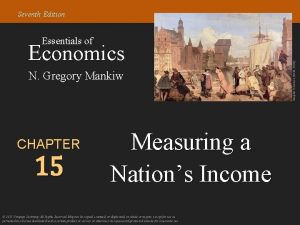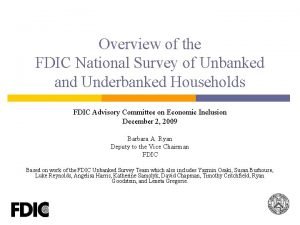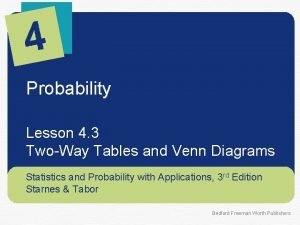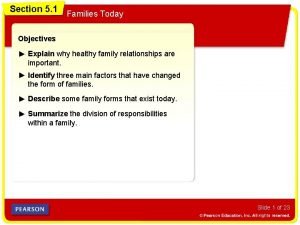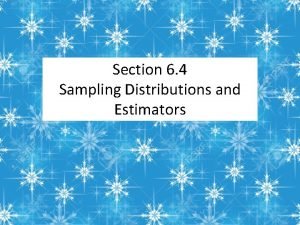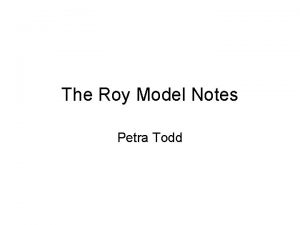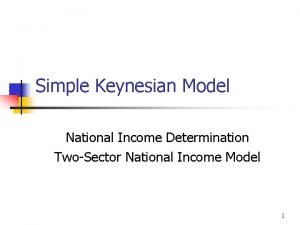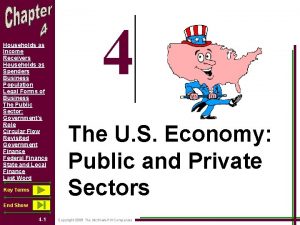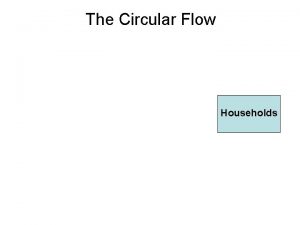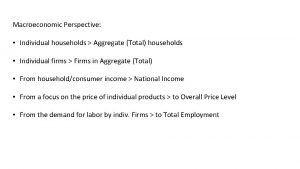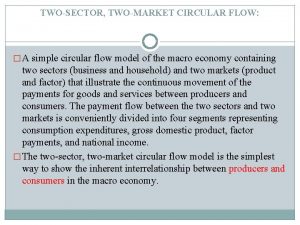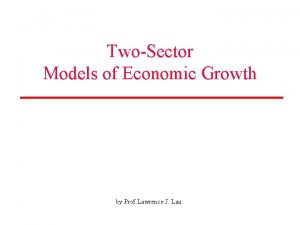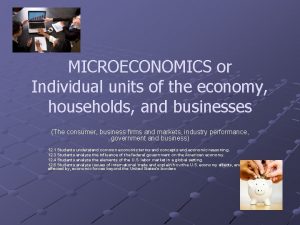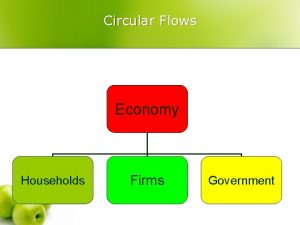The Twosector Model of the Economy Households and










- Slides: 10

The Two-sector Model of the Economy (Households and Firms) • The households (consumers): – – Require goods and services to satisfy their personal wants Own all resources (i. e. labour, capital, land, enterprise) Sell resources to businesses Gain income (e. g. wage, interest, rent, profit) from such sales • The firms/business sector (producers): – – Uses resources provided by households to produce goods and services Sells those goods and services for income Copyright 2005 Mc. Graw-Hill Australia Pty Ltd PPT Slides t/a Economics for Business 3 e by Fraser, Gionea and Fraser 15 -1

The Two-sector Model of the Economy • Assumptions: Businesses are the only producers – All goods and services are sold to consumers – Consumers spend ALL their income on goods and services – There are no resource inventories – • Therefore: • Total demand (expenditure) = total supply (output) • The economy will always be in equilibrium (cont. ) Copyright 2005 Mc. Graw-Hill Australia Pty Ltd PPT Slides t/a Economics for Business 3 e by Fraser, Gionea and Fraser 15 -2

The Two-sector Model of the Economy (cont. ) • Two groups of decision makers Households (sell their resources) – Firms (sell goods and services) – • Interaction between the two sectors through markets: Resource (factor) markets – Product markets – (cont. ) Copyright 2005 Mc. Graw-Hill Australia Pty Ltd PPT Slides t/a Economics for Business 3 e by Fraser, Gionea and Fraser 15 -3

The Two-sector Model of the Economy (cont. ) Productive resources Factor market Income Household sector Firms sector Goods and Services Expenditure Product market Copyright 2005 Mc. Graw-Hill Australia Pty Ltd PPT Slides t/a Economics for Business 3 e by Fraser, Gionea and Fraser 15 -4

In the Basic Circular Flow O = Y = E Where: O = output (production) Y = income E = expenditure (demand) Copyright 2005 Mc. Graw-Hill Australia Pty Ltd PPT Slides t/a Economics for Business 3 e by Fraser, Gionea and Fraser 15 -5

The Financial Sector • Saving (S) = Part of the Income that is not spent (leakage) • Total income = consumption spending + saving, i. e. Y=C+S • Investment (I) = that part of production that is not used for current consumption, e. g. capital goods Total income (Y) = C + I • Investment is an injection. If: S > I, the economy contracts S < I, the economy expands S = I, the economy is in equilibrium • The financial sector acts as an intermediary between lenders and borrowers Copyright 2005 Mc. Graw-Hill Australia Pty Ltd PPT Slides t/a Economics for Business 3 e by Fraser, Gionea and Fraser 15 -6

The Government Sector • Government taxation (T) reduces households’ disposable income and business funds Taxation (T) is a leakage (outflow) • Government spending (G) includes expenditure on collective goods and services and goods and services provided by the business sector, plus transfer payments (social security payments) Copyright 2005 Mc. Graw-Hill Australia Pty Ltd PPT Slides t/a Economics for Business 3 e by Fraser, Gionea and Fraser 15 -7

The Modified Five-sector Model of the Economy It is a five-sector model of the economy: • The household sector • The firms sector • The government sector • The financial sector • The external (overseas) sector Copyright 2005 Mc. Graw-Hill Australia Pty Ltd PPT Slides t/a Economics for Business 3 e by Fraser, Gionea and Fraser 15 -8

The Two-sector Model of the Economy (cont. ) Income Household sector Firms sector Expenditure L E A K A G E S Savings Taxation Imports Financial sector Government sector External sector Investment Government expenditure Exports Copyright 2005 Mc. Graw-Hill Australia Pty Ltd PPT Slides t/a Economics for Business 3 e by Fraser, Gionea and Fraser I N J E C T I O N S 15 -9

The Open Economy • Total leakages (outflows) are S, T and M • Total injections are I, G and X • The impact of total leakages/injections on the economic activity is as follows: S + T + M = I + G + X equilibrium S + T + M > I + G + X contraction S + T + M < I + G + X expansion Copyright 2005 Mc. Graw-Hill Australia Pty Ltd PPT Slides t/a Economics for Business 3 e by Fraser, Gionea and Fraser 15 -10
 Households and firms circular flow model
Households and firms circular flow model Athenian economy vs sparta economy
Athenian economy vs sparta economy Two households both alike
Two households both alike Two households, both alike in dignity,
Two households, both alike in dignity, Romeo and juliet two households both alike in dignity
Romeo and juliet two households both alike in dignity National survey of unbanked and underbanked households
National survey of unbanked and underbanked households In one large city 40 of all households own a dog
In one large city 40 of all households own a dog Two households alike in dignity
Two households alike in dignity Margatroth
Margatroth Blended family
Blended family Three randomly selected households are surveyed 2 6 7
Three randomly selected households are surveyed 2 6 7
